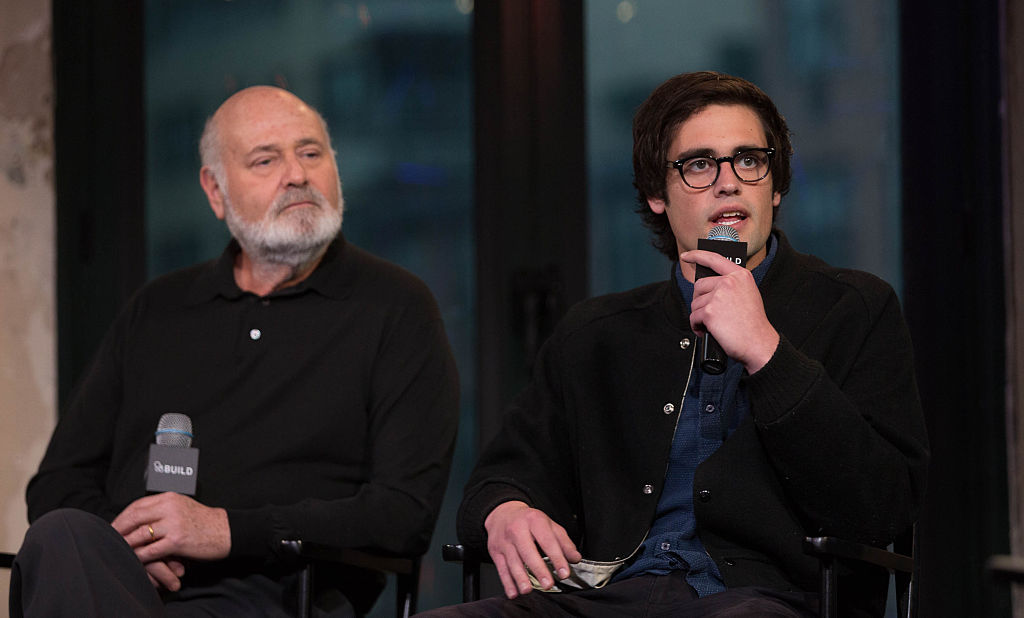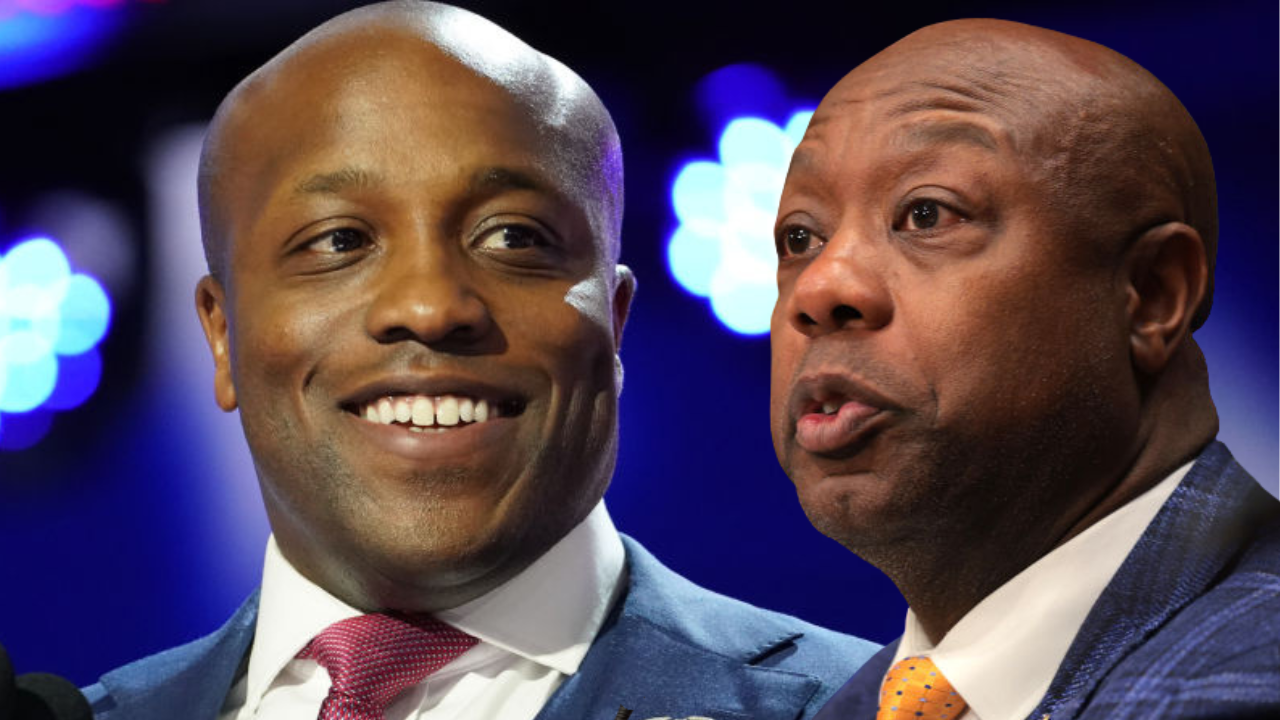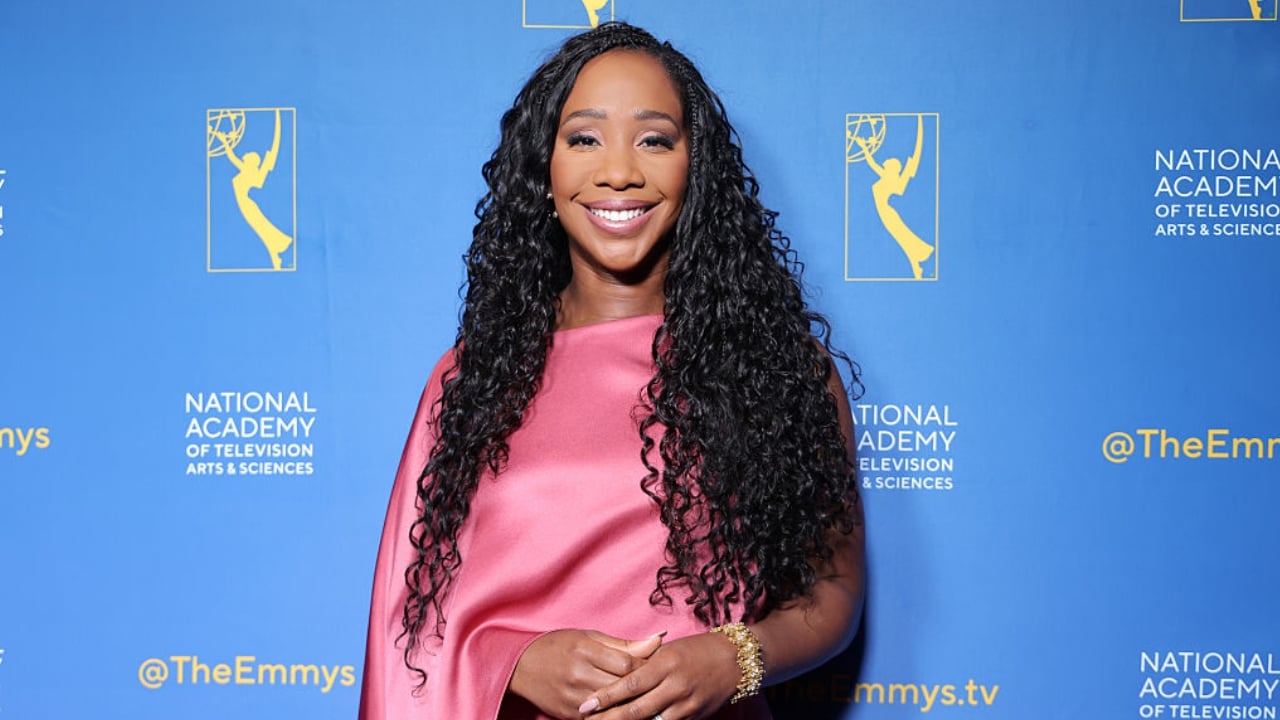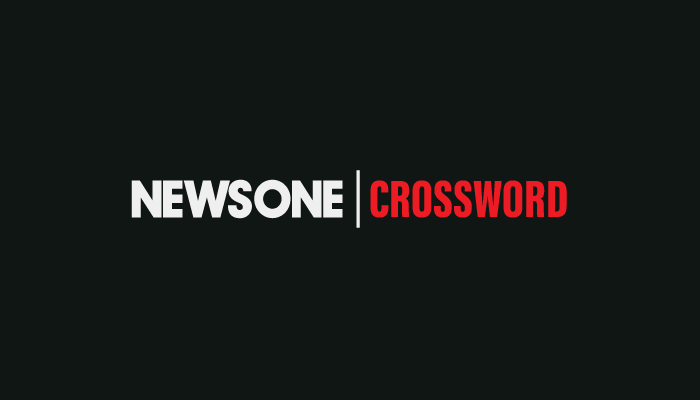The high stakes of NIL adds promise, peril and chaos to college recruiting

It’s the million dollar NIL deals that grab the headlines. There’s $4 million plus for forward AJ Dybantsa to play basketball for BYU and wide receiver Jeremiah Smith to catch touchdowns for Ohio State, while NiJaree Canady’s move from Stanford to Texas Tech made the USA Softball National Player of the Year the sport’s first million dollar player. Money like that is life changing.
But to some experts, the realities of NIL (Name, Image, and Likeness), even for top earners, are more complicated. And that’s to say nothing of college athletes whose earnings top out at tens or even hundreds of thousands of dollars. That can be especially true for Black athletes.
What happens when the tax bill comes due and young athletes have failed to put anything aside for Uncle Sam? When newly rich teens and young adults splurge on dining out, tattoos, or their play-uncle’s new car wash business? What happens, especially, when they frame out a free-spending lifestyle based on money that lasts only as long as their college eligibility? Then that’s gone, and they haven’t earned a degree?
Few changes in collegiate sports have been as wildly impactful as the patchwork of rules and regulations granting high school and college athletes the ability to get paid known as Name, Image, and Likeness. The past five years have seen NIL Collectives (booster organizations funding deals), clearinghouses (to monitor the deals), further lawsuits, and calls for federal regulation. And all that was before this summer’s blockbuster $2.8 billion House class action, antitrust settlement. It allowed, among other things, revenue sharing between NCAA Division I schools and student-athletes for the first time.
These sweeping changes have made for a kind of “wild, wild west scenario,” said Kevin White, associate athletic director for James Madison University in Harrisonburg, Virginia. White, a former scholarship athlete who has four sons who have played or now play football in high school and college, understands the student-athlete experience from multiple perspectives.
“Right now, there’s so much money exchanging hands,” White said. And it’s almost singularly driving recruitment decisions.
NIL has dramatically upped the college recruitment stakes and presents particular challenges for Black athletes and their families. Cautionary tales abound, White said.
For the second installment of our Recruiting While Black series, White spoke with Andscape about the promise, pitfalls and opportunity costs of NIL and getting paid to play.
This interview has been edited for length and clarity.
Set the table for me. For high juniors and seniors, and even younger student-athletes, what should they and their families be thinking about with the fall academic semester underway and football, the major college revenue generator, at midseason?
There has to be an academic component that comes into play, right? Because if you’re not NCAA eligible, then you can’t earn a scholarship. You have to finish your academic year strong. The private school kid, in most instances, is taking a college preparatory course load. Sometimes the public school kid experiences not having all their core classes completed. They just need to make sure they are aligned and that if someone offers them a scholarship, they are in a position to receive it and take full benefit from what the institution is offering.
I talked to AAU and [Nike circuit] EYBL basketball coaches and they were talking about kids who are only worried about their stats. They’re only worried about their opportunity. They’d rather score 20 points and lose the game. This fills in a broad gap in understanding because now you’re starting to understand why at the college level, oftentimes, they’re not prepared to compete, they’re not prepared to train. And so the kids that understand it’s not just about them, it’s about being a cog in a wheel that represents the greater purpose of a team and have a smoother transition.
For a high school athlete on the path to a college athletic scholarship, there are standard, benchmark considerations about the right fit with a coaching staff and program, about opportunities to grow as an athlete and student, and especially for those who don’t go on to the pros, about graduation rates. How do you index those considerations and what happens after college in an era of NIL?
As a student-athlete, those things don’t change. I think what has changed is the narrative. Because of this House settlement and because athletes are being paid, those questions now aren’t necessarily being asked, even though kids are left to deal with those things when they arrive on our doorstep. So now, it’s not even so much about the offense [a school] runs. It’s not even so much about the coach that they’re going to play for. It’s about a bottom line, right? I’ll give you a great example.
We offered a kid a full scholarship. Another school came in and offered the kid a full scholarship plus $20,000, and so he decommitted. That was about nothing but money. It had nothing to do with a degree, had nothing to do with coaching staff, had nothing to do with anything but a dollar amount. And I’m not saying it’s wrong. I’m not saying it’s right. Twenty grand is 20 grand for an 18-year-old.
But what’s driving a lot of the discussions is money and not everyone’s going to get paid. You have Division II schools [that are not eligible for House settlement’s revenue-share provision]. You have FCS [Footballl Championship Subdivision] programs and the Group of Five conferences [that aren’t required to opt-in to the House settlement]. Then you have the Power Four football conferences [the top tier leagues in major college sports) that are required to revenue share. And depending on what line you stand in, that dictates your outlook and your mindset.
How so?
So you have an athlete whose family might be in dire straits. A lot of really good players are coming from those types of environments. Everybody’s looking at things in immediate terms of, well, my teammate went there and he was treated well.
But there are also families who are more resourced.
Last spring we had a mom and dad whose son came to our spring practice. They also have a son at [an ACC school]. They were telling me about how that son has an NIL agreement, and they broke down what they were doing to help manage that. They said, “Well, we make him put a percentage in a Roth [IRA]. We make him put a percentage in savings to pay his car note, and we make him put a percentage in another account to pay his taxes. And then we give him a food allowance.”
I said, “A food allowance?” The dad was like, “It makes no sense, Mr. White. This kid eats more off campus than he does on campus, and the food on campus is free.” So here you have two parents that have mapped out a plan for their son that he’s living by.
The unfortunate piece is I don’t believe that’s the norm.
You’ve called these NIL changes a kind of a “wild, wild west.” What might that look like in terms of navigating the various conferences and the quest to get paid?
For a mid-major, one of the things that you’re going to start to see is that your best players are going to be poached. You come in and do well as a freshman or a sophomore? Well, your stock has gone up. You might be at a place like a JMU or a Group of Five [five conferences that are not part of the top-tier Power Four leagues] school and you now might be in a position where you can get $200,000 or $300,000 because you made an all-rookie team. Now you’re going to the transfer portal and you go from not being paid to being paid.
If you’re at a Division II school as a Black student athlete and you have a lot of success, you’re going to have an opportunity to go to an FCS or Group of Five school. If you have success at that level, then you’re going to have an opportunity to go to the Power Four level. And what’s not taken into consideration — because every time you transfer all your [classroom] hours don’t necessarily transfer — the one thing that we’re not a hundred percent sure about is how will all that work out in terms of you actually earning a degree. There are kids transferring three and four times, so how do they earn their degree? Or are they earning a degree?
As we navigate through this, I think we’re going to have a better sense of who’s graduating. Are Black students graduating? Are white students graduating? At what rates are they graduating, how long is it taking them and what are they getting their degree in?
This is a new era. And understand this: I’ll give you that $200,000, but when you want to come back and ask me questions about what to do with it, how to do it, how to pay taxes, then I’ve got my hands in the air. It’s like, “Listen, I gave you the money. That’s not my job to educate you on how to spend your money.” And you and I both know, when you get a large sum of money, Uncle Sam’s going to get his part. So hopefully these kids are being educated, they are being informed, and they’ve got people working alongside them who are taking whatever they need to put aside for taxes.
We know hope is not a strategy, so when it comes to NIL, what are some of the added considerations, some of the intangibles that athletes and their parents need to understand?
[At] 18 or 19 years old, if someone said, “Hey, I’ve got four schools that are recruiting me. One wants to give me $300,000 and everybody else wants to give me $50,000. That $300,000 is life-changing money for my family.” So it is hard to turn a blind eye to that, and every other consideration becomes secondary.
Do they have your major? Nobody is even talking about that. Do they run a style offense that you want to play? Nobody’s even talking about that. Is the coach developing young men? Nobody’s even talking about that right now. It’s the $300,000. That’s what has my attention. That’s what my focus is. The monetary piece is overshadowing all the other issues that you’re going to be faced with and have to deal with.
And you wonder why mental health challenges are so prevalent. You’re still talking about a 19-year-old that looks like a man, but he’s 19. He has to transition into college and still have some sense of time management, still has to navigate and take care of business on a day-to-day basis while he has all this money in his bank account that he wants to spend doing whatever he wants to do with it – tattoos, cars, shoes, whatever it is. So it has just become another layer. And I don’t know that our African American kids are set up to manage all these things. And I’m just curious to see what happens over the long haul.
Now, instead of student athletes being paid under the table, they’re being paid on top.– Kevin White
Some athletes and families can afford to look beyond the highest NIL offer, but others might risk being caught out there at the end of their eligibility chasing the money. What choices have you seen athletes faced with, and what would you do if one of your football-playing sons got an NIL deal?
So, the son of a friend graduated in December. He was All-ACC and he had one more year of eligibility. His dad had health challenges and now the young man doesn’t have male guidance in the home. According to his mom, [his university] offered him $1.7 million to come back. That’s $1.7 million guaranteed. His agent told him, you need to go into the draft because you stand to make more. Now, from my perspective, if it’s my son, my son’s going back to school to get the $1.7 million because with the NFL, they say that shield stands for “Not For Long.”
Initially, with my son, I would have an interest in going to a place where he could get a quality experience and education. The way the model is set up today, there’s no reason that you can’t graduate in three and a half years. I wouldn’t put my son in the [NIL] meat grinder his freshman and sophomore year. If he graduates in three and a half years and he still has a year or two of eligibility, well then that’s a different narrative. He’s a little more mature. We understand that now we’re maybe making a decision that’s purely financial.
If you play your last year or maybe your last two years and make money, you might not have to entertain the NFL. You could have invested your money, started your own company and you can hit life running. That’s the way I look at it. Sports is a vehicle. It’s going to open doors. Use it to put yourself in a position where you can do some things that you couldn’t do before now. And every young person in America that’s making six figures that is still in college has that opportunity. They just need to be educated and informed. Stop worrying so much about the immediate and think about tomorrow. Think about how you can create generational wealth for you and your family. Because when you’re getting that kind of money at that age, there’s no reason why you can’t do that.
What’s the takeaway from all this NIL promise and peril?
Sports teaches a lot of great lessons. Companies like to hire former athletes because they understand how to lead, how to be a subordinate, how to work within the team, all those characteristics that you need to have in order to be successful in life. There was a point in time when you had to be a professional to get paid. Well, now you can get it in college. So what’s the incentive to continue to work hard? What’s the incentive to go to school? What’s the incentive to get good grades? What’s the incentive to graduate? I think the water is murky for a lot of that right now.
At the end of the day, the one thing that I know that I can speak to is that for everyone that plays a sport, it’s going to end for all of us at some point. For some of us, it ends when your college career is over. Some wanted to go to college so they could become a pro, and there’s nothing wrong with that ambition. But while you’re chasing that ambition, you’ve also got to chase something that becomes permanent that no one can take from you. You can lose your ability to run and jump tomorrow. Your ability to think rationally, your ability to apply information, your ability to regurgitate information when you learn it, no one can ever take that away from you. And that makes you valuable, that makes you marketable to the workplace. This new generation, they need to make sure there’s a balance.
It’s still the same conversations that we had 20 years ago. It’s just now, instead of student-athletes being paid under the table, they’re being paid on top.
The post The high stakes of NIL adds promise, peril and chaos to college recruiting appeared first on Andscape.
What's Your Reaction?
 Like
0
Like
0
 Dislike
0
Dislike
0
 Love
0
Love
0
 Funny
0
Funny
0
 Angry
0
Angry
0
 Sad
0
Sad
0
 Wow
0
Wow
0































